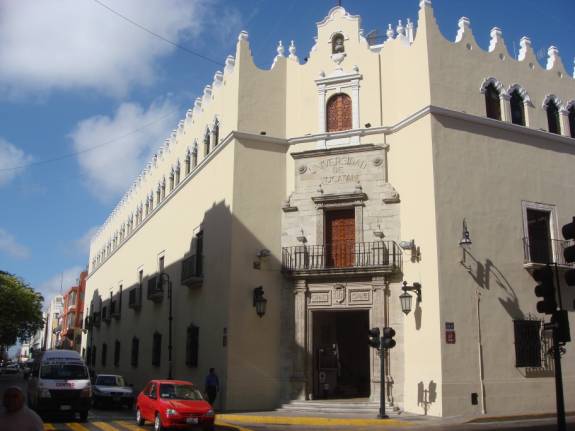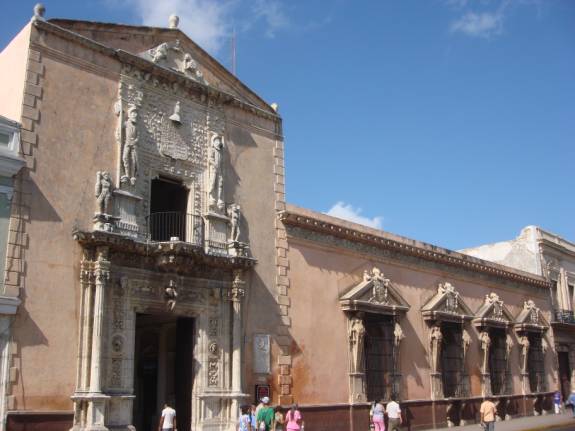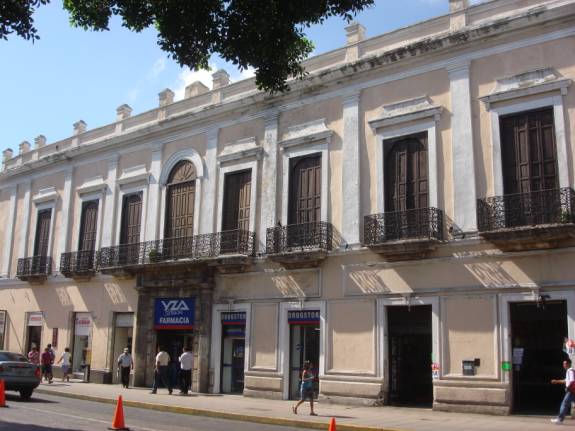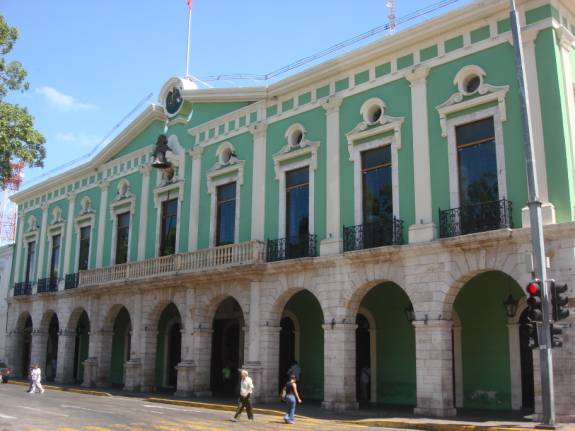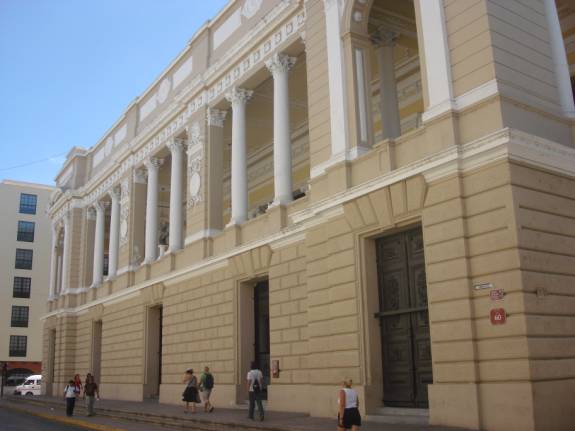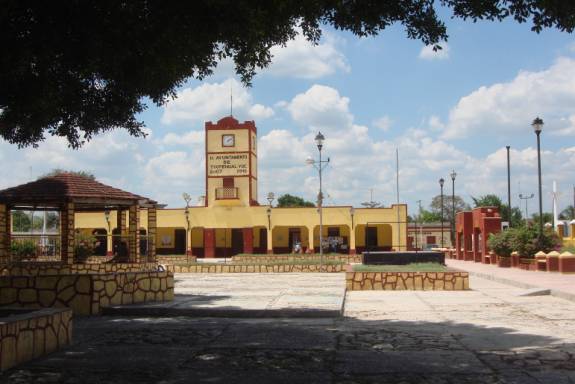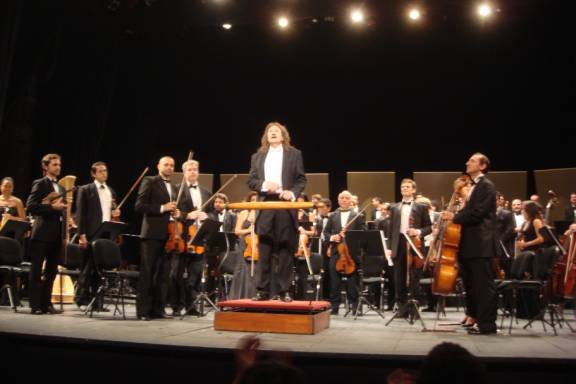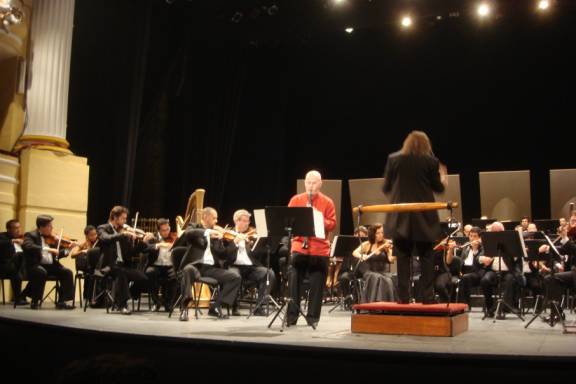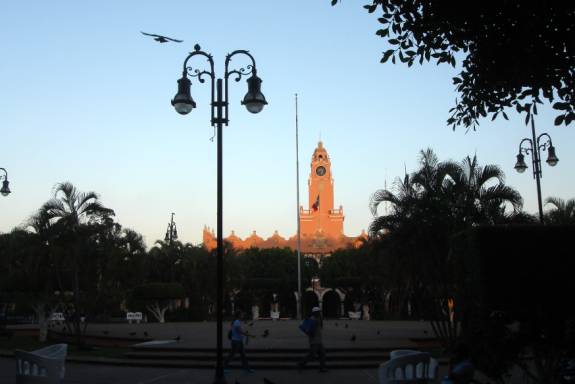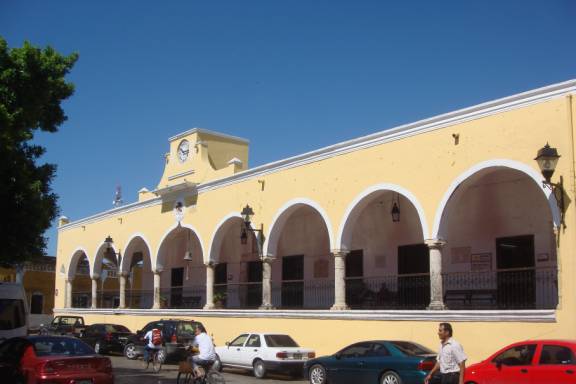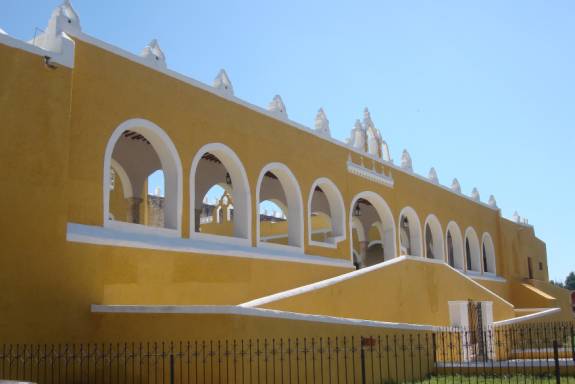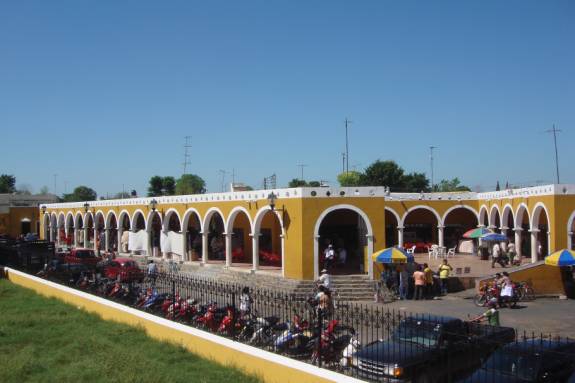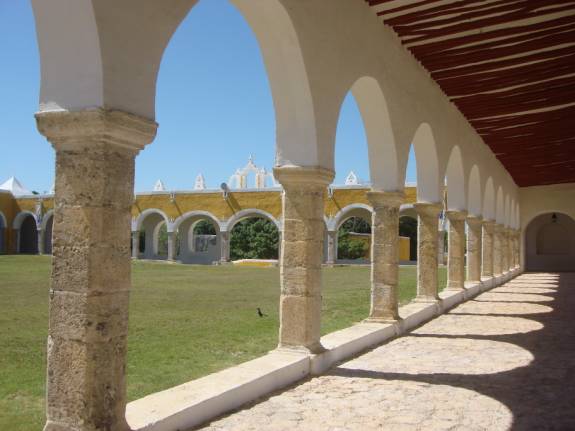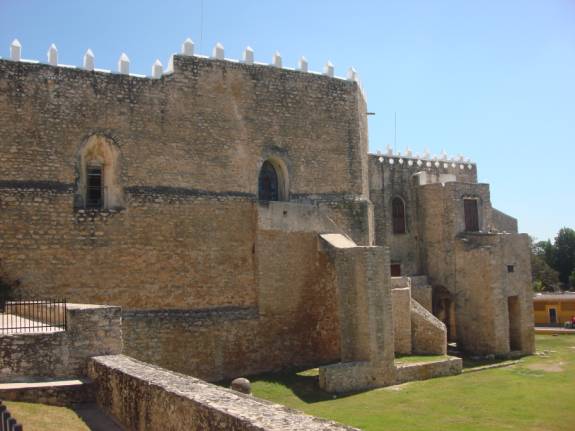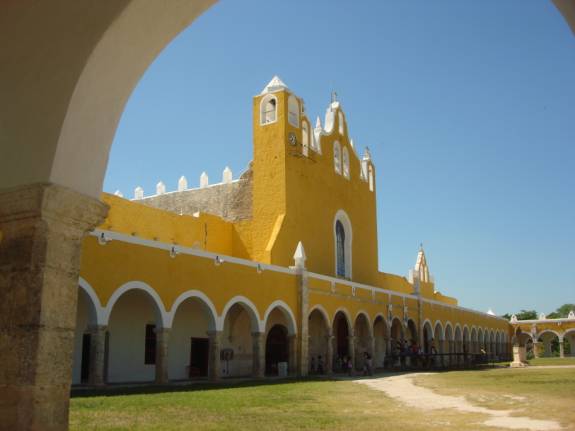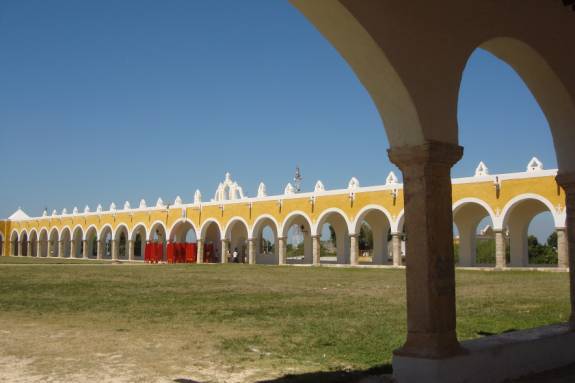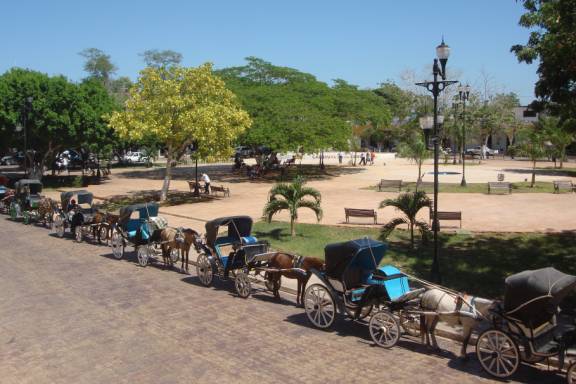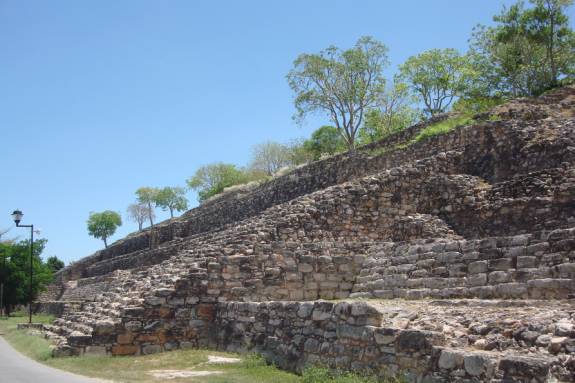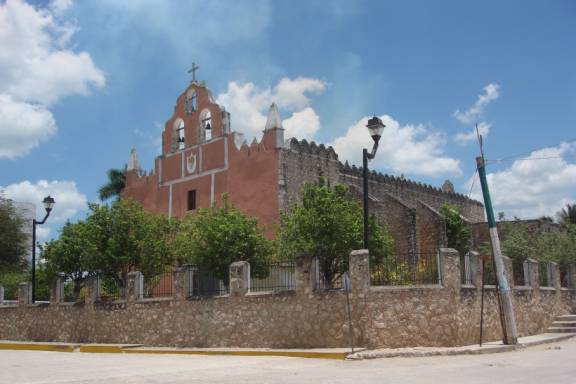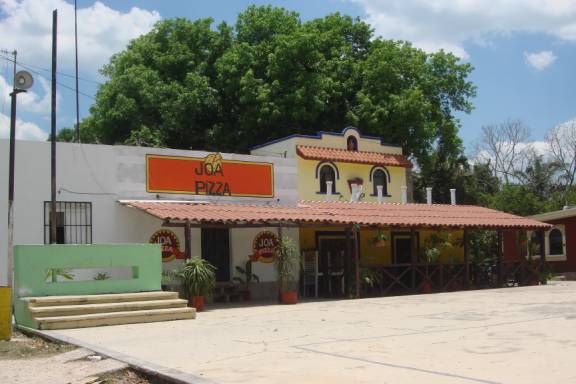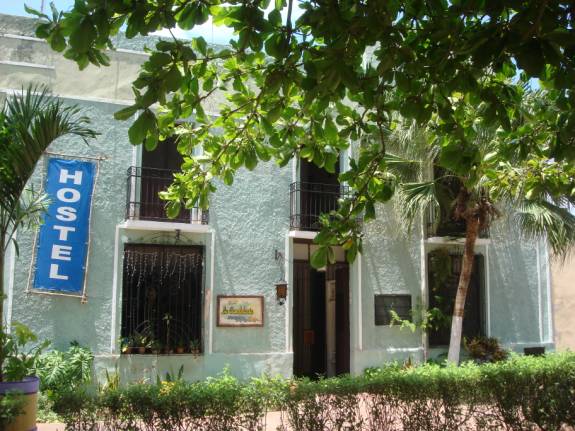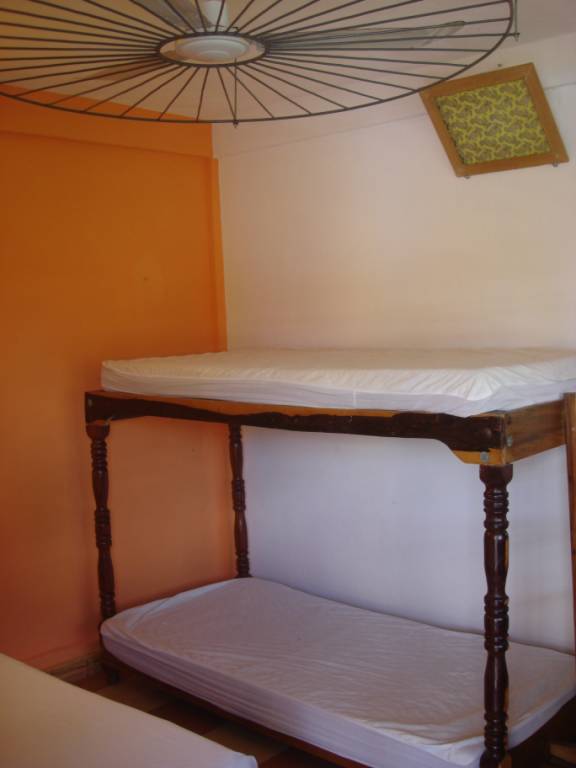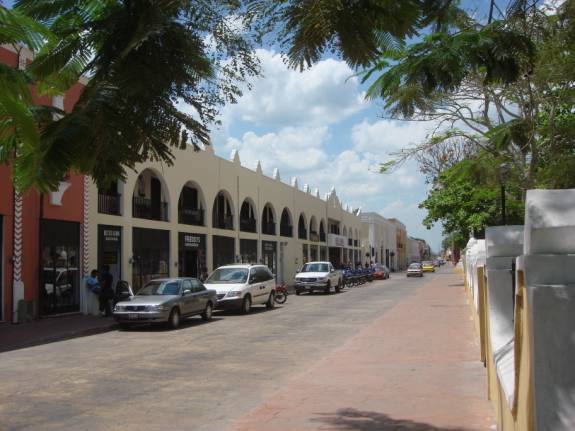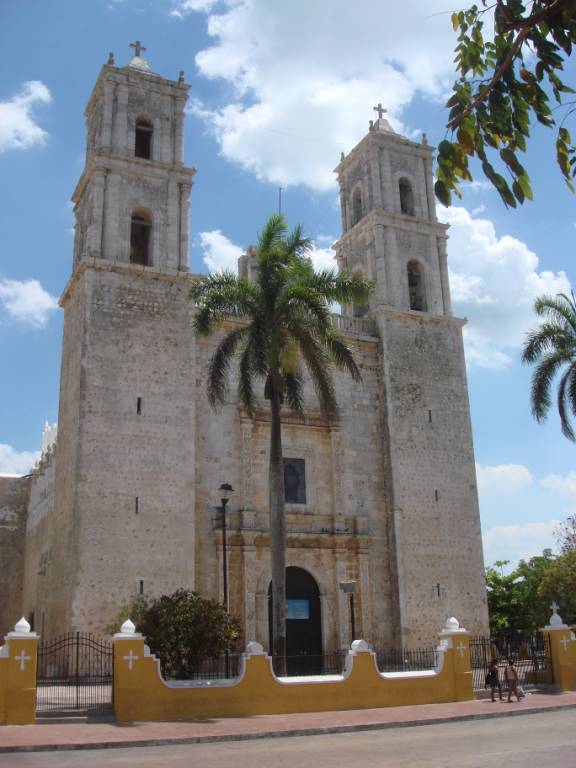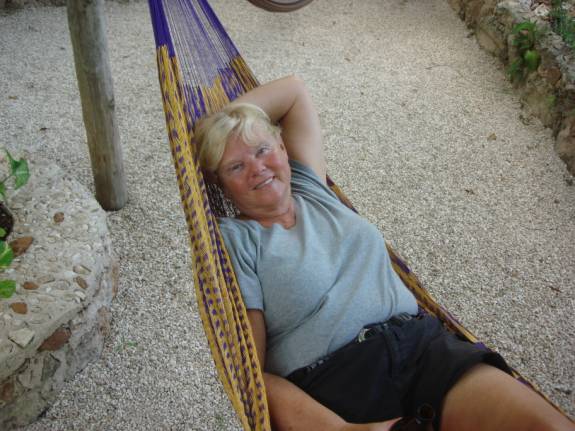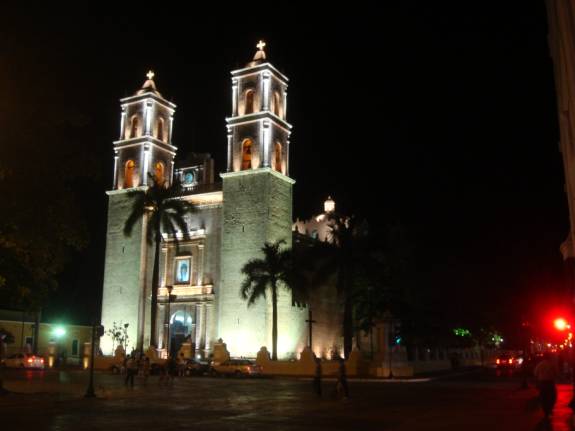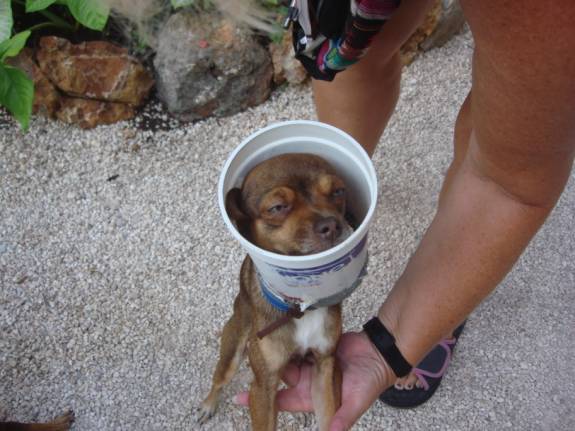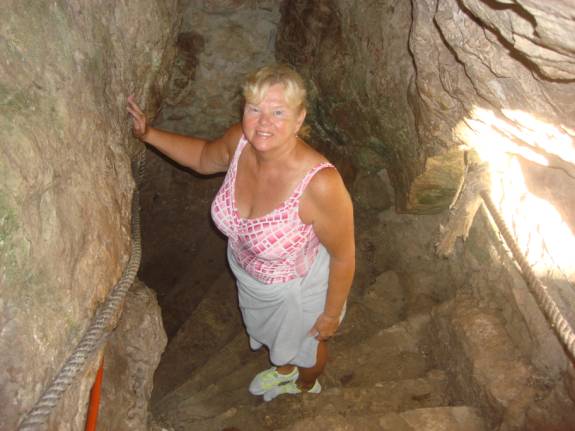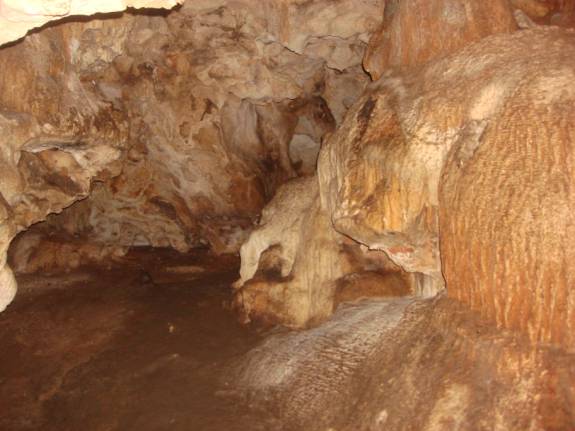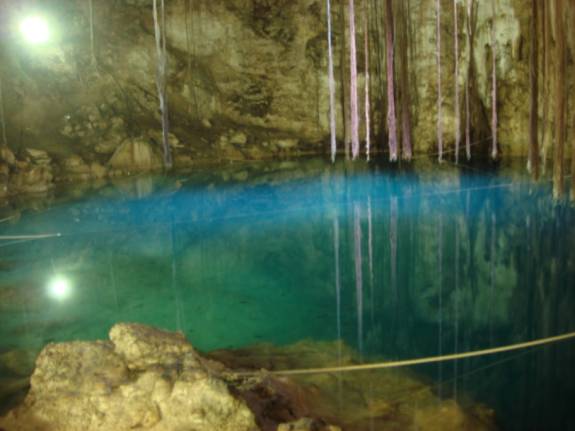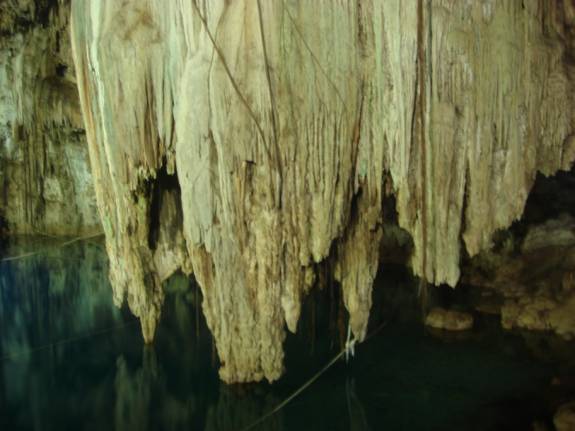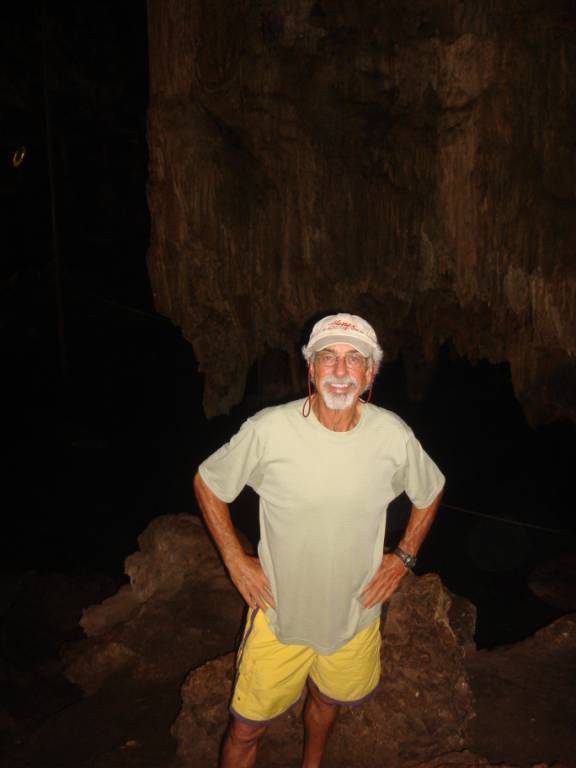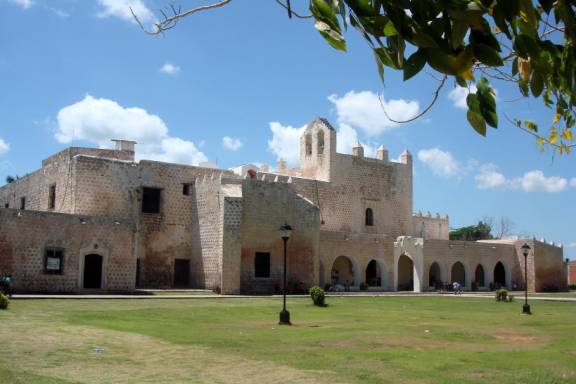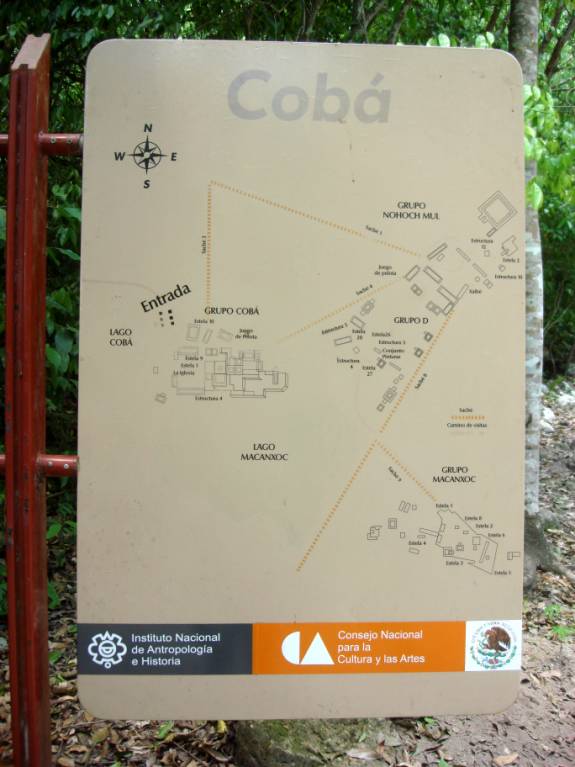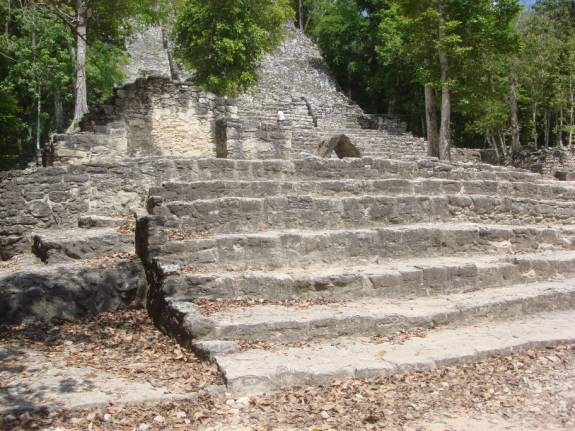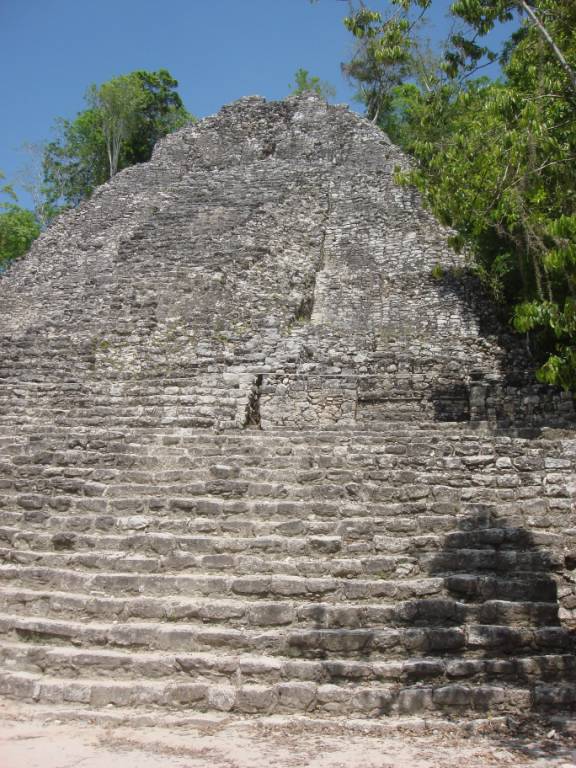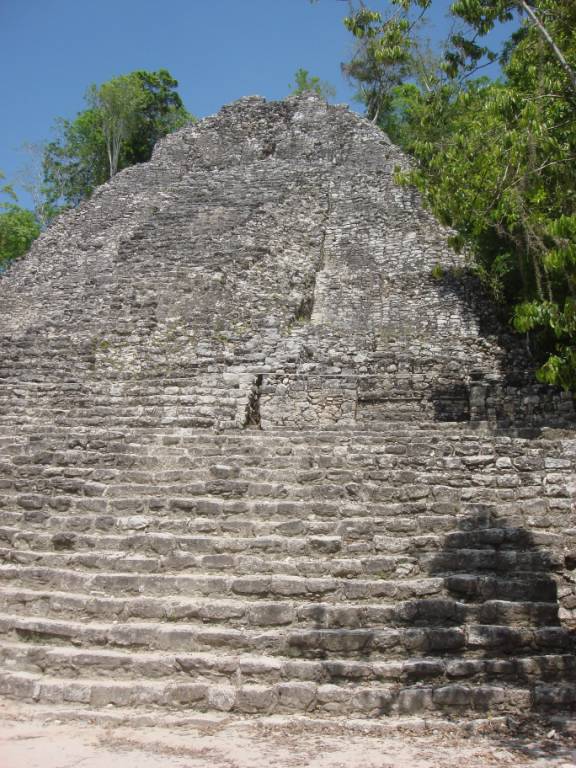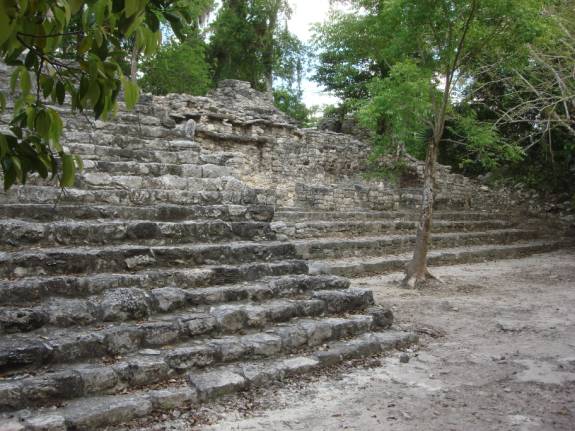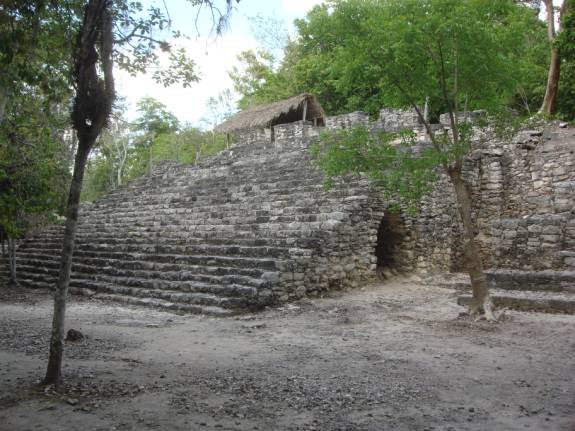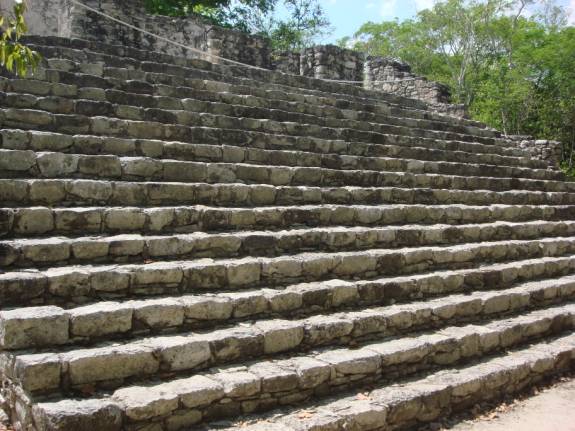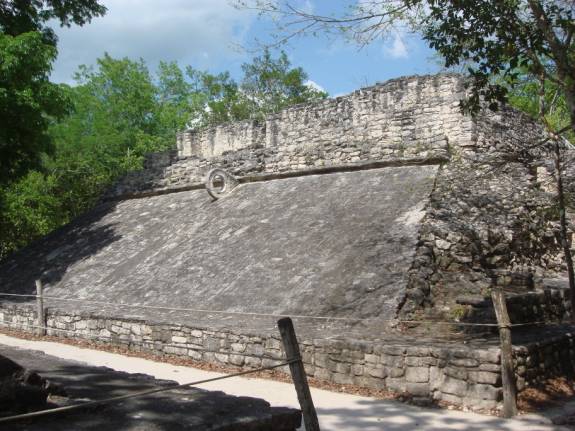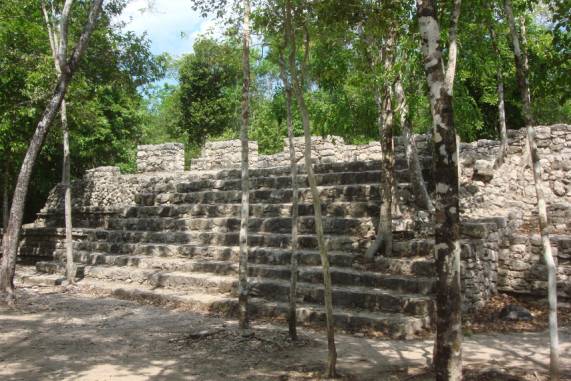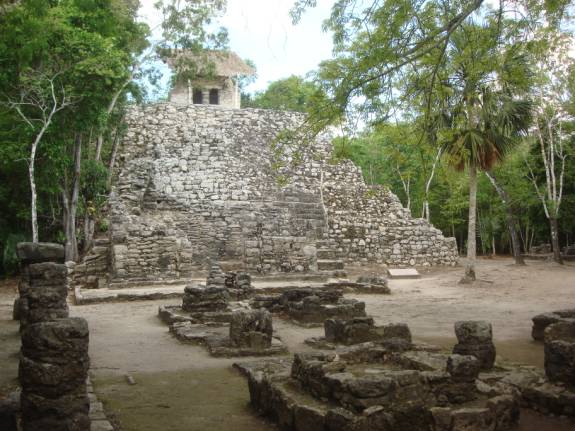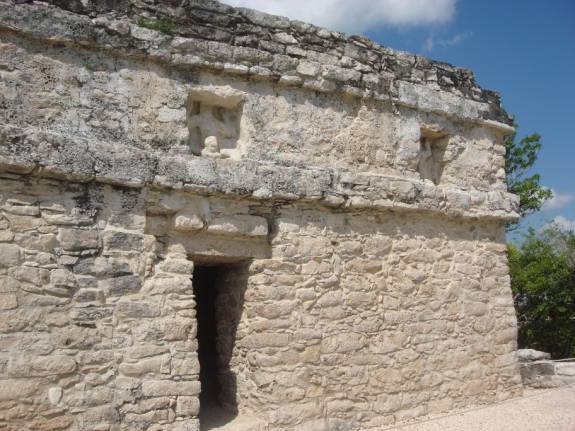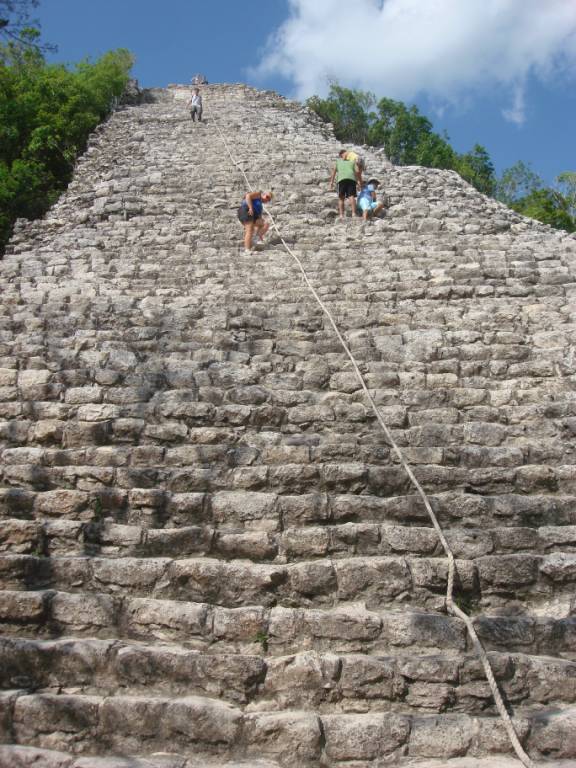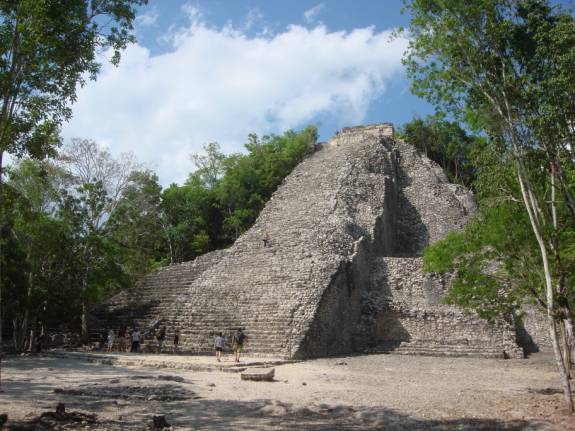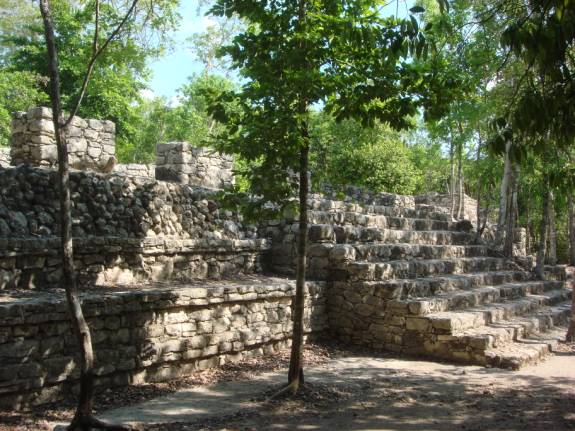|
|
|
|
Site Index:
|
UPDATE#18
05/07 TO 05/09
Howdy
Everybody, The adventures
of 2006, 2007, 2008, 2009, and thru 05/06/2010 have been published on the
website. We continue with the
latest edition. UPDATE
2010 #18 05/07/2010 to 05/09/2010 At last update,
we were traveling on a Yucatan adventure in Mexico.
Welcome back to our continuing adventure… 05/07/10
THURSDAY MERIDA
Our day started out in the city of Merida.
Again today, the weather was beautiful, except for the very hot
conditions that have been reaching levels well above normal.
University of the Yucatan in central Merida…
The Palacio de Municipal, fronting to the Plaza Grande…
Former residence of the Montejo family, Casa de Montejo…
A pharmacy and shops now occupy this historic building that faces the
Plaza Grande…
Offices of the State of Yucatan government…
Side view of the Teatro Peon Contreras…
Hotel Casa Lucia…
TIXPEHUAL,
YUCATAN
Templo de San Martín (época colonial).
Municipal offices and city hall at Tixpehual, Yucatan…
MERIDA,
YUCATAN
Teatro Peon Contreras… Once
again, this beautiful venue provided an excellent program.
Temporada
XIII Orquesta Sinfonica de Yucatan: Programa 9
Tonight, we thoroughly enjoyed the wonderful Yucatan Symphony Orchestra
Teatro Jose Peon Contreras, Merida
Berislav Skenderovic, Director Huesped. (guest director)
Luis Mora, Clarinete
05/08/2010
SATURDAY MERIDA to IZAMAL to
VALLADOLID
Knowing that we would be leaving this wonderful city of Merida this
morning, I was up early and out to catch a few last minutes of the beauty
surrounding the Plaza Grande in the center of the historical district.
We drove eastward to the City of Izamal.
Izamal is often called the “Ciudad Amarillo” (Yellow City) because of
the large number of yellow painted buildings.
Fray Diego de Landa, 16th Century Franciscan religious leader…
Shops fill the arches of the Portales that surround the area of the
monastery.
After the Spanish conquest of Yucatán in the 16th century, a
Spanish colonial city was founded atop the existing Maya one, however, it was
decided that it would take a prohibitive task to level the two huge Mayan
structures and so the Spanish contented themselves with placing a small
Christian temple atop the great pyramid and building a large Franciscan
Monastery atop the acropolis. It was named after San Antonio de Padua.
Monastery of San Antonio de Padua…
Completed in 1561, the atrium of the Monastery was second in size only to
that at the Vatican.
Much of the cut stone from the Pre-Columbian city was reused to build the
Spanish churches, monastery, and surrounding buildings.
The colonial feel is enhanced by numerous horse-drawn carriages.
The remnants of the ancient, pre-hispanic
Mayan pyramids still exist near the city center.
As most of you know, Judy owned pizza restaurants.
We took special note of this one since her initials are JAO.
We just figured that this was a Spanish translation resulting in JOA.
Arriving back in Vallodolid, we headed straight for the Casa de
Candelaria guesthouse. Our previous stay here was enjoyed and we felt fortunate that
they had a good room available for us.
The rooms here are very simple but very clean.
This room had a very unusual metal guard placed under the ceiling fan.
The room was set up for four people.
Being just the two of us, we used the other beds for our stuff.
Part of downtown Valladolid…
A pillar and iron fence surrounds the park area at the cathedral…
Cathedral of San Gervasio, Valladolid…
Judy found an empty hammock in the garden courtyard of our guesthouse…
The Cathedral of San
Gervasio illuminated at night…
05/09/2010
SUNDAY VALLADOLID to DZITNUP to COBA to VALLADOLID
The guesthouse owners had an unusual idea to keep their Chihuahua from
scratching himself. A yogurt container was fitted like a kind of muzzle.
I don’t think the pup enjoyed it very much.
The Yucatán Peninsula is a porous limestone shelf with no visible
rivers; all the fresh water rivers are underground. Being porous, caverns and
caves formed where the fresh water collects – hence the cenotes or water
sinkholes.
Located just 5 miles from Vallodolid at Dzitnup, we visited the
areas largest cenote, X-Kekem.
We arrived quite early in the morning, so, after climbing down the stone
stairs to the underground cavern, it was just us and the bats.
We had hoped to take a swim in the cool, clear spring waters, however,
the water level was unusually low and we thought it might be too hazardous and
slippery to get in over the edge rocks. We
were surprised at how much lower the water was than last time we visited here
some years ago.
Anyway, it was fun climbing around the cave and looking at the
formations.
Up and out, without even getting wet…
EX-CONVENTO DE SAN BERNARDINO DE
SIENA…
It is called "Sisal" to the Valladolid locals, but is better
known as the Monastery of Saint Bernardino of Siena.
With our bags packed and loaded into the rental car, we headed east and
southeast toward the coast. COBA
About halfway between Valladolid and the eastern coast, we visited the
archaeological site of Coba.
Cobá was first settled between 100 BC and 100 AD. After 100 AD, the area
around Coba evidenced significant population growth, ultimately transforming
Coba one of the biggest, most powerful city states in the Yucatan peninsular.
Between 200 and 600 AD, Coba dominated a vast area, including northern Quintana
Roo and eastern regions of the Yucatan State. This power was due to the control
of massive areas of farmland, trading route control, control of the eastern
seaports, and excusivity of the ample water resources.
The mid-day temperatures were very hot and the site is very extensive,
requiring a lot of walking and climbing. Bicycles
were available for rent, and bicycle rickshaws with drivers were available to
take you throughout the site. As
prices were aimed at the affluent tourists, we opted to remain pedestrians.
The Oval Temple at Grupo Coba…
The Mayan ball court…
Ball court, complete with loop-ring hoop…
Conjunto Las Picturas
(Temple of the Paintings)…
The Nohoch Mul pyramid…
In the intense heat, it requires quite a bit of exertion to
climb its 120 steps up to the top of the pyramid.
The temple, which crowns the pyramid, was added later and is similar to
the style found at Tulum. In a
niche over the entrance, there is a carving of the Mayan descending god.
We were amazed at the extensive root structure reaching out from this
tree.
We returned to the Casa La Candelaria guesthouse in Valladolid.
At the grocery store, we picked up supplies to make our own dinner at the
cooking area of the guesthouse. Fellow
guests, Tammy and Richard from Chicago, joined us for the meal. I had made plenty for all and it was good.
Our adventures will continue in the next update.
For easy access to the NEXT update, you can scroll back up on this page
and, then, click on the NEXT
button to advance to the next update.
CONTINUING
UPDATES ARE IN PROGRESS…
WATCH
FOR THEM, COMING SOON… POST SCRIPT:
We sincerely hope that you will review the previous years of compilations
to give context to the current editions. Please
let us know if you have any special suggestions and thoughts.
REMEMBER: The website
is now fully active and you can visit it at any time.
You can also review any of the previous logs from the years 2006, 2007,
2008, and 2009 to learn more about the crew and their many adventures. Enjoy. ATTENTION:
SPECIAL NOTE:
You may contact us via email anytime. Thanks
for allowing us to share our life and adventures with you. Lotsa
Luv, Fred
Reed and Judy Law AMARSE MT40 "AMARSE"
is pronounced "AM-ARE-SAY".
Our website is: www.amarse.net
. CONTINUING
UPDATES ARE IN PROGRESS…
WATCH FOR THEM, COMING SOON…
|
|
Fred H. Reed |
www.amarse.net © 2006 2007 2008 2009 2010 2011 |

